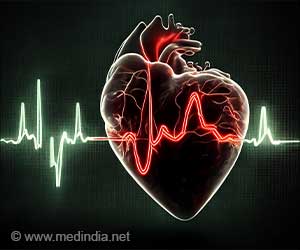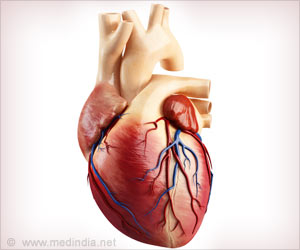A new study presented at the EuroPRevent meet revealed that wide-scale screening to detect risk of sudden cardiac death (SCD) in young people was feasible and cost effective.

The study was reported at the EuroPRevent congress 2014 in Amsterdam by Dr Rajay Narain, Clinical Research Fellow from the Department of Cardiovascular Sciences, St George's University of London (and Cardiac Risk in the Young Heart Screening Charity), UK.
As background to the study Dr Narain explained that the most publicised cases of SCD in young people occur in elite sports players and athletes. Yet the majority of cases occur as a result of inherited cardiac conditions (such as hypertrophic cardiomyopathy), and a large proportion of these, he adds, can be detected during life. SCD in a young person is likely to have resulted from an arrhythmia caused by a mutation in one of the cardiac ion channels or from other inherited conditions affecting the muscles of the heart.
"To prevent such tragedies," said Dr Narain, "sporting and scientific bodies recommend pre-participation screening in young athletes. However, this approach is controversial because of cost - and most SCDs in the young are likely to occur in non-competitive athletes. It was thus our aim to see if population screening was feasible in this age group."
The study involved the screening of 12,000 young people irrespective of their athletic ability. Only 13% were considered elite athletes. Screening was performed at a cost of £35 per individual and comprised a health questionnaire, 12-lead ECG and consultation with a cardiologist. Those with abnormalities had an echocardiogram on the day or were referred for further evaluation. Follow-up data were obtained through self-reported patient questionnaires.
Results showed that almost one-in-ten of the population (9.4%) were sent for echocardiography on the day, and 2.7% (323 individuals) were referred for further assessment. Of these who responded to the questionnaire and completed their follow-up investigations (189), a cardiac pathology (or findings necessitating regular follow-up) were identified in 31 (16%). The most common were heart block (10), irregular heart rhythm (9) and valvular heart disease (6). Different cardiomyopathies were evident in 11 cases.
Advertisement
Commenting on the results, Dr Narain said that the concept of early identification of potential victims is still a highly controversial issue. "Those opposed question the cost effectiveness of pre-participation screening and the need for multiple investigations to identify so many disease processes implicated in sudden cardiac death," he said, adding that there are also concerns about the medical and legal implications of false positive and negative results.
Advertisement
"Fortunately," said Dr Narain, "the incidence of SCD, especially in people doing sports, is low, so several thousand athletes have to be assessed to identify the one who might die suddenly. But despite their rarity, such events are highly visible, particularly when high-profile athletes are involved. The cardiac arrest of the footballer Fabrice Muamba last year is just one example of the societal impact of such tragedies."
Population screening to prevent SCD in young people is "possible and achievable" said Dr Narain, who added: "Most developed countries have the potential for creating an infrastructure in high schools similar to established immunisation programmes. There is evidence that teachers, coaches and even volunteering parents could be trained in ECGs. The incentive is prudent - 25–30% of the population in the Western world is now aged 18 or under."
Source-Eurekalert








